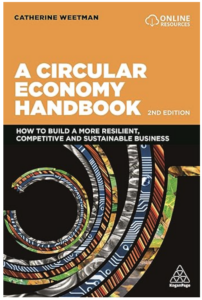This article is sponsored by Enviva.
To be clear, global industries were not designed to be low carbon; the road to decarbonization and net zero will necessitate more action than just eliminating plastics and encouraging recycling. The climate crisis requires mass collaboration and a radical rethink on how governments, NGOs, societies and global businesses operate.
Why today?
Today, the global economy is not on a trajectory consistent with the Paris Agreement to phase out fossil fuels. According to the United Nations’ Intergovernmental Panel on Climate Change (IPCC), even if the world follows the most stringent emission reduction pathways, we will still exhaust the global carbon budget by 2040.
As seen by the recent surge in peak power prices across Europe, most of the world continues to rely on coal to meet electricity demand. Far from being priced out of the market, the need for dispatchable power is keeping fossil fuels — especially coal — in the game. So why are we using so much coal and fossil fuels? It’s because maintaining baseload, dispatchable power is a challenge. Batteries and other grid-scale storage mechanisms aren’t yet feasible, and the economics remain questionable — and so is managing the intermittency of solar and wind. Batteries and hydrogen offer hope in the medium and long term, but we are only nine years away from the deadline to decrease EU emissions by 55 percent. We simply do not have the time to wait for those solutions to become cost-competitive at scale.
All governments and corporations must actively reduce carbon emissions today if we desire to see a carbon-neutral or carbon-negative world tomorrow. As industrialists and global citizens, we must tackle one of the most significant environmental, social and economic challenges of our time — finding renewable energy solutions that can combat the climate threat this century — but we must act now.
To date, woody biomass — low-value wood (tops, limbs, diseased and damaged trees not suitable for other uses) that is a by-product of a sawmill operation or a planned traditional timber harvest — is the only renewable, scalable, reliable, dispatchable solution available today that provides both power and heat generation capabilities.
Sustainable bioenergy already provides low-carbon heat and power to nearly 50 million European households, but its use will have to more than double by 2050 if we wish to meet E.U. climate targets. In addition to increasing sustainable bioenergy use to meet 2030 targets, how bioenergy evolves, how it will be used and how it will be invested in are critical questions to be considered.
How Sustainable is Biomass?
It depends…
The biomass industry is the most highly regulated among the entire forest products sector. For biomass to be recognized as “sustainable” and eligible to receive subsidies, it must be produced and consumed following an overlapping system of international, federal and state-level laws.
We believe sustainably sourced biomass must: come from a region where forest carbon stocks are stable or increasing; require that forests are regrown after harvest; not use wood that could have another high-value use; and be harvested with respect for biodiversity and conservation value. We believe all wood fiber procurement should be sourced according to these principles, and compliance should be independently verified.
The use of biomass as a climate change mitigation measure has been recognized and continues to be supported by the United Nations Intergovernmental Panel on Climate Change (IPCC), International Energy Agency, U.K. Committee on Climate Change, U.S. Department of Agriculture, U.S. Department of Energy, European Union and many other leading academic and government bodies around the world.
The fundamental science on the carbon and forestry benefits of wood bioenergy, when produced sustainably, is well-established and remains unchanged. It has been attested to by the leading scientists and academics who specialize in this field and is underpinned by a growing body of academic literature, including crucial research published in 2019 and 2020. Biomass can provide firm, dispatchable baseload power, and it can provide this low-carbon power today. As a result, biomass offers an immediate low-carbon solution, and bioenergy must be part of the mix as we consider the global energy transition.
Alternative energy solutions must be deployed today. Sustainably sourced biomass can displace coal 1:1, keep the lights on when wind and solar energy are scarce and reduce carbon emissions by 85 percent on a lifecycle basis.
![]()
![]()
![]()
![]()
![]()
But I thought biomass was a transition fuel?
Biomass can be used in the energy transition, but its applications go far beyond the rapid phase-out of coal from the power industry. Biomass also offers an energy solution for heavy industries which require intense, uninterrupted heat and power. Biomass is a critical pathway for decarbonizing difficult-to-abate industries such as steel, cement, lime, chemicals and aviation fuels.
Today, energy-intensive companies, and those requiring high heat, cannot use wind or solar power, as both suffer from intermittency, and neither can currently offer the necessary heat intensity. Given that wood pellets are the only renewable energy fuel available today that can generate both power and high-temperature heat, they serve as the ideal solution. Over the last year, domestic and international steel companies have been exploring incorporating bioenergy solutions into their business models. Currently, coal is used as an energy source and reducing agent to de-oxidize ferrous ore in steelmaking. In this instance, biomass can substitute coke in the process. Additionally, biomass as an energy source can provide energy security — and a stable cost base for manufacturers.
In sugar production and cement-making, biomass can be used for drying and clinker production. In the chemicals industry, both energy substitution and material substitution can occur. Due to its bio-carbon structure, woody biomass is a substitute for fossil-based base chemicals, and for syngas, biomethane, ammonia, ethanol and process steam applications. Presently, biomass is the only route to decarbonize heavy industry — hydrogen shows promise, but it is not yet available. As it relates to the development of the hydrogen economy, biomass is expected to remain essential in developing hydrogen at scale, and will continue to evolve into other critical roles.
Furthermore, biomass has been a proven leader in innovation, applying breakthrough technology to deliver negative emissions. The biomass industry will be among the first to adopt carbon capture and storage (BECCS). In fact, the Royal Society and Royal Academy of Engineering have estimated that BECCS could enable the U.K. to capture 50 megatons of CO2 per year by 2050 — about half the nation’s emissions target. With the right innovation and engineering, heavy industry could reach net negative and help to remove carbon from the atmosphere. If we are to deliver a 6.7 percent annual reduction in emissions by 2050 — as required to achieve net zero — negative emissions are essential, and sustainably sourced biomass is mission-critical.
Leveraging sustainably sourced biomass is a vital solution to mitigate climate change. To achieve the most significant impact, however, government, industry and investors must take action. Governments must provide a regulatory framework to allow heavy industries to decarbonize, and investors must have regulatory certainty to deploy significant capital. Heavy industries must have a supportive regulatory framework and investment capital to provide the confidence for long-term planning and use of renewable energy resources.
Source: https://www.greenbiz.com/article/future-biomass-today-tomorrow-and-beyond







